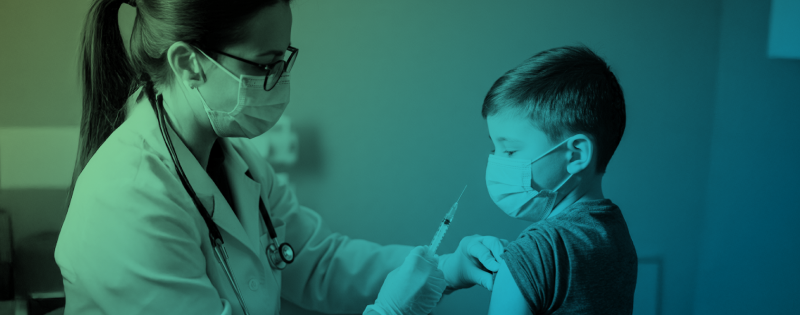Televox is proud to announce that its Enterprise Edition SMS solution has been awarded Gold…

Hospital Communication Systems: How to Modernize for Better Patient Care
It’s not just about inconvenience. Outdated communication systems are pretty much a hazard for healthcare providers. Delayed messages and missed updates can overwhelm care teams and seriously compromise patient safety.
Modern communication technology is now being used to close these gaps with real-time alerts and smart routing. Forget adding any more pagers. Automation and AI-driven tools take the lead on your communication systems to streamline coordination, making healthcare faster, more accurate, and highly efficient across the board.
Why Hospital Communication Systems are Important?
Poor communication in healthcare can lead to dire consequences. Any delayed or missed updates can end up causing medical errors or worse, failures.
Patients cannot afford to wait because their doctor failed to receive lab tests or necessary paperwork. Such disruptive communication only results in subpar patient care, especially during emergencies when providers rely on coordinated efforts across multiple departments.
Furthermore, seeing the staff scramble during critical moments significantly impacts how willing patients and their families are to trust their providers. Let’s not forget that they are already under stress. A fragmented hospital communication system will never earn their trust and satisfaction.
Challenges and Limitations of Old Communication Systems
Providers still running legacy systems face numerous challenges that make patient engagement more difficult than it is. The outdated technology often works against them by disrupting their outreach, delaying messages, and allowing patient data to slip through the cracks.
Most importantly, legacy communication mostly accounts for manual processes, which increases the risk of human errors. Duplicate file entries. Lost paperwork. Missed appointment reminders. The fact is that modern healthcare demands speed, accuracy, personalization, and integration. Old communication models simply fail to deliver that.
Key Components of Modern Hospital Communication Systems
Modern hospitals make different components work together to improve patient care while reducing administrative burden.
Integrated EHRs for Communication and Engagement
EHRs are the foundation of any hospital communication. Connecting your communication and patient engagement tools directly to EHR systems enables your staff to quickly access relevant patient information from the same screen.
So, the front-desk staff can pull appointments during conversations, and a nurse can check the patient’s full history to confirm any medication changes. This makes coordination much easier and efficient between departments.
Digital Patient Portals
Patient portals are nothing short of being the heart of a modern hospital. They give patients direct access to their health information. They also allow them to send messages to their doctors at their convenience.
These portals significantly reduce administrative calls by giving patients more control over their care. They don’t have to physically visit clinics or hold on the phone to get their test results, for example. They can do most tasks, including bill payments, from the same portal.
AI-Powered Telephony Systems
All patient calls can be quickly routed by AI systems without being put on hold or asked to repeat the same information. Urgent calls that demand immediate attention are escalated to specialists. This way, patients automatically get connected to the right person without any wait times.
Secure Messaging Alerts and Reminders
Automation redefines how providers and patients communicate. These advanced systems send alerts to medical staff about medication changes, patient statuses, lab results, etc. Patients, on the other hand, receive automated reminders about appointments, medication, follow-ups, etc. The biggest feat of modern hospital communication is that patients can simply reply to confirm or reschedule. They no longer have to make phone calls.
Analytics and Reporting
AI systems and tools provide hospitals with analytics that monitor interaction between providers and patients. These data sets give hospitals valuable information to enhance outreach, such as response times, favorable channels, now-show percentages, etc. They are vital for providers in finding and fixing gaps in their communication processes.
Secure and Compliant Infrastructure
Every hospital communication system needs to follow an extensive list of HIPAA requirements. This is crucial in securing your messages and ensuring they are not breached by cybercriminals. The patient’s data should only be seen/read by authorized eyes. Hence, why HIPAA makes it necessary to have different levels of access depending upon the role of the staff.
HIPAA-compliant systems are able to maintain detailed logs, making communication audits easier. Its weighted importance is why hospitals need vendors who understand healthcare regulations and have a history of securing communication channels.
Benefits of Advanced Communication Systems in Hospitals and Practices
Modern healthcare organizations are using advanced tools to make their communication smarter. It reaps measurable improvements for both patients and providers alike.
Faster Clinical Decision-Making
When doctors and nurses receive key alerts on time, they can make necessary decisions that much quicker. This means the staff trusts the accuracy of the information, and so they can start moving towards the next steps in care. It cuts unnecessary time that would otherwise be spent on further consultation and coordination.
Improve Patient Care and Engagement
Having a two-way messaging system gives patients the power to ask questions without having to call up their doctors or make additional visits. This communication improvement plays a large role in redefining patient engagement and care. The accessibility and convenience significantly reduce anxiety and work towards building stronger relationships between providers and patients.
Improved Internal Collaborations for Medical Teams
A centralized communication system means everyone can see the same updates in real time. They don’t have to send runners or call up other departments to ask for any pending test results, for example. The moment one department is done with its task, the other one can immediately start preparing to do theirs. This timely collaboration reduces miscommunication between care teams.
Reduced Administrative Burden
The biggest benefit of having an advanced communication system in hospitals is that automation eliminates manual phone calls. With automated schedulers and self-service portals allowing patients to take charge of their care, medical professionals can use their skills to deliver actual patient-centric care. They no longer have to spend hours and hours on a daily basis chasing patient information or juggling phone calls and paperwork.
Improved Productivity and Operational Efficiency
Automation reduces administrative workloads, but that shouldn’t be confused with staff members being replaced. Rather, they get to complete most of their routine tasks much faster through these modern systems.
For instance, automated schedulers may manage calendars, but the front-desk staff still uses their patient data to personalize engagement. This includes dealing with escalated situations where a human reassurance is unmatched.
Similarly, the system may send instructions to nurses, after which they can quickly prepare for treatments without making trips to the nursing station.
Strengthened Emergency and Incident Response
A mass notification system readies all staff members during emergencies. This is when hospitals cannot afford to waste a second, let alone spend hours on consultations and preliminaries. When an incident happens, all relevant departments are immediately sent a critical alert by the communication system. They gain access to shared information streams, making it easier and efficient to continuously stay updated with the situation.
No Scalability Concerns
Legacy systems are difficult to expand. Modern communication platforms, though, have no such issues. Healthcare organizations these days rely on cloud-based technology that can easily grow with their needs. New departments can be added without hassle. The same goes for new users or even new locations. The system automatically handles the new load without compromising performance or requiring downtimes for technical changes.
Compliance and Regulatory Requirements are Managed
All communications create permanent audit trails that meet regulatory standards. It’s easier to pass inspection when you have complete documentation of every communication attempt or message sent. This includes confirming security features for HIPAA and complying with data retention policies.
Good for the Reputation and Trustworthiness of Healthcare Institutes
Patients notice when healthcare providers communicate effectively. Timely responses to questions, clear instructions, and proactive updates create positive experiences that patients share with others. This positivity reflects in word-of-mouth recommendations and online reviews, which frequently mention the communication quality as a deciding factor for choosing healthcare providers.
The Role of AI-Powered Patient Engagement Systems
Discuss how AI-powered communication solutions for hospitals and practices can help improve patient outcomes and achieve better results overall.
When we say modern communication methods, we mean AI-driven systems that equip providers with smart engagement tools. These systems go beyond basic automation. They adapt, learn, and get smarter with each interaction. So, conversations start feeling more personal and relevant over time.
With an array of data sets that are available to them for analysis, such as EHRs, patient preferences, clinical notes, and medical conditions, AI solutions provide personalized communication that achieves higher patient satisfaction scores and better health outcomes.
But the artificial intelligence systems are not designed to substitute for your human employees. Complex cases are still passed on for human experts to consider. This combination of automation with human oversight guarantees that patients get the most suitable and correct answers in line with their specific requirements.
Additionally, AI tools continuously track patient progress. This can be hundreds of patients across various branches at the same time. Healthcare organizations leverage that advantage to immediately identify and address specific challenges, such as alerting care teams when intervention is needed. The result is more proactive care that prevents complications and reduces emergency visits.
How to Improve Your Current Communication System for Modern Patient Needs
Upgrading your legacy communication systems requires strategic planning and phased implementation. The most successful upgrades focus on integration, automation, and personalization rather than adding more disconnected tools.
Your Communication System Should be Integrated With EHRs
Integrating your communication tools with electronic health records is a fundamental step towards timely and accurate coordination. You can either ask patients the same questions every time, hoping they don’t skip something important, or simply access their complete medical history through their EHR entry. This helps staff conduct more informed conversations and prevents communication gaps that lead to medical errors and patient confusion.
Use Automation for Reminders, Alerts, and Other Communication Types
Say goodbye to dedicating dozens of hours every day to phoning up patients. Automated messaging forms a major part of modern patient communication. The system handles all routine queries, ensuring a full schedule every day based on the patients’ preferences.
So, someone scheduled for a visit can be reminded in the morning, while an elderly person can be alerted exactly when they need to take their pills.
However, don’t just stop there. Providers should also make an effort to personalize their automated deliveries. Create message templates to target different conditions instead of recycling the same generic tone.
Personalize Communication Based on Data and Segmentation
Personalized communication, driven by patient data and segmentation, boosts engagement by tailoring messages based on health conditions, demographics, and behavior. Systems adjust content, frequency, and delivery methods to match each patient’s needs, sending more frequent updates to high-risk patients, respecting language and cultural preferences, and shifting channels based on response patterns.
Close Care Gaps with Proactive Outreach
Cancer screening reminders, vaccination updates, and chronic disease monitoring alerts reach patients before gaps become serious problems. This proactive approach improves population health outcomes and reduces emergency interventions.
Use a Multi-Channel Communication Approach Based on Preferences
Even with automated messaging and AI-driven tools, you still need to consider what channels the patients prefer. Most like to receive reminders as text messages. Calling them up might feel personalized for the staff, but not for the patient, especially young adults.
Similarly, educational materials should be sent via email so that they can go through them at their own time. Patient portals also work well in this regard.
The goal of improving communication relies on response rates. With every interaction, the system automatically adjusts itself to maximize engagement.
It’s not just the timing. Maybe the system realizes that it’s getting better interactions by keeping text messages brief. This tailoring improves comprehension and response rates across all patient demographics.
How to Upgrade Your Hospital Communication System Without Breaking It
Upgrading your hospital’s communication takes a systematic approach. It takes a lot more than just ripping out the old and starting with new. The key is to break down the whole process into phases. This ensures that your staff continues delivering patient care while carefully integrating new tech.
Start by identifying communication gaps. Review your current system and find the most critical breakdowns. Maybe your test results are delivered too slowly. Maybe you’re finding it hard to manage appointments during peak season. List down these high-impact areas and target them first.
Conduct a phased implementation in parallel to your old system. Refrain from replacing the whole infrastructure at once. Start with one department first, usually the one that’s not critical to emergencies.
For instance, outpatient services work well for initial testing. Run the pilot program, but have your staff work on both systems during the overlap period. This may prove a bit costly short-term, but it prevents communication blackouts that could seriously compromise care.
Most importantly, ensure interoperability. Your new tools and systems should work seamlessly with your EHR and existing systems. Compatibility is the backbone of a smooth communication upgrade. Otherwise, even the most advanced platform becomes nothing more than a silo.
Don’t go it alone. Upgrading communication systems is complex, and the stakes are high. That’s why a partner like TeleVox makes all the difference. With decades of healthcare experience, TeleVox not only provides proven tools but also helps your team implement them with minimal disruption and maximum impact.
Emerging Trends in Hospital Communication
The future of hospital communication is smarter, faster, and more connected than ever. These are some of the key innovations reshaping how providers engage with patients while streamlining their internal operations.
AI-Driven Chatbots: Harnessing the power of conversational AI, the old bot support is evolving into an intelligent virtual assistant that takes over routine patient interactions with human-like qualities. These AI chatbots can do everything from answering common questions to scheduling appointments, 24/7. They can understand context to give accurate responses in real time for improved patient satisfaction.
Predictive Alerts: The new AI systems are not just automating communication; they are also monitoring thousands of lines of patient data in real time. It only takes them seconds to anticipate any issues in care to trigger an alert to the most appropriate department. Your proactive outreach gets improved tenfold, and your departments get to identify high-risk patients for earlier interventions.
Real-Time Analytics: Modern communication platforms have their own dashboards that give a holistic view of your entire operation. You can track engagement, follow appointment trends, weigh message performance, and more in real time. These insights are highly valuable for healthcare leaders to refine their outreach strategies.

How Does TeleVox Ensure Streamlined Patient Engagement and Communication?
Patients only value healthcare messages if they feel personal and useful. Your outreach shouldn’t feel like generic blasts, and with TeleVox, they don’t.
We transform outdated, one-way communication into smart, responsive engagement that meets patients where they are. Our AI-driven systems streamline your appointment reminders, follow-ups, and preventive care messaging to not just arrive when they should, but drive immediate action and responses.
We call it our Smart Agent, your next-generation digital concierge that handles real-time two-way conversations for all your needs. Messages feel human because they’re tailored to the patient’s history and needs. And behind the scenes, everything runs on a secure, HiTrust-certified, HIPAA-compliant platform with real-time data syncing.
TeleVox is already trusted by thousands of healthcare organizations and facilitates over a billion patient interactions annually. If you’re serious about improving patient satisfaction, cutting costs, and giving your staff room to breathe, it’s time to see the platform in action. Book a demo today and discover what smarter communication really looks like.



